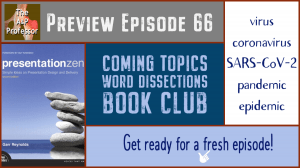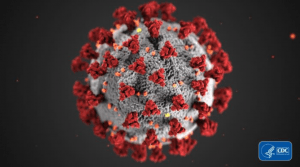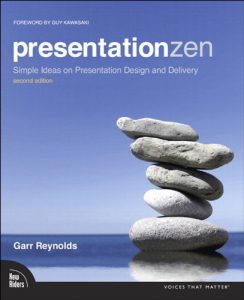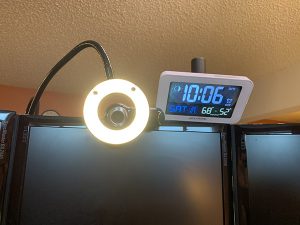Host Kevin Patton talks about ways to improve our teaching slides, the challenge of trying new things, how to make sure our web meetings secure from Zoom bombing, and the Foldit protein folding game. Check out AAA's virtual meeting week, OMES virtual conference, HAPS's virtual town hall meetings.
00:58 | Fumbling First Try
02:33 | Sponsored by AAA
06:19 | Zoombombing
11:09 | Sponsored by HAPI
12:22 | Foldit Protein Folding Game
16:48 | Sponsored by HAPS
17:32 | FreeMedEd: OMES Virtual Conference
19:33 | Slides Serve Our Story
31:27 | Sponsored by ADInstruments
32:52 | Staying Connected
When we have no relevant experience or expertise, the vulnerability, uncertainty, and fear of these firsts can be overwhelming. Yet, showing up and pushing ourselves past the awkward, learner stage is how we get braver. (
Brené Brown)
Fumbling First Try
5.5 minutes
Professor and author Brené Brown talks about "effing first tries" but which I call "fumbling first tries." These are the firsts cited in the quote above—those that involve that awkward learner stage. And yes, getting through our FFTs makes us braver!
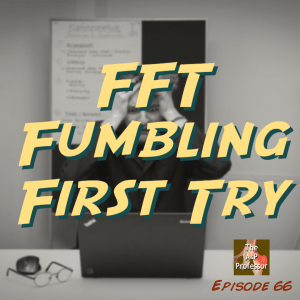
Sponsored by AAA
1.5 minutes
A searchable transcript for this episode, as well as the captioned audiogram of this episode, are sponsored by the
American Association for Anatomy (AAA) at
anatomy.org.
April 6-10, 2020→ Special
Virtual Annual Meeting Week at
theAPprofessor.org/VAMW20
Don't forget—HAPS members get a deep discount on AAA membership!

Zoombombing
3.5 minutes
Zoombombing involves unwanted intrusion into our web meetings. There are ways to avoid this however!
- ‘Zoombombing’ Attacks Disrupt Classes (article discussing the importance of familiarizing yourself with the settings in your web meeting platform to avoid intrusive and offensive interruption) my-ap.us/2WGYCHH
- How to Keep the Party Crashers from Crashing Your Zoom Event (post from Zoom on how to manage settings for safety) my-ap.us/3bwesZY
- Are Zoom Chats Private? Here’s Why You Should Think Before Opening The App (Forbes article) my-ap.us/2wfqyaM
- ‘Zoom is malware’: why experts worry about the video conferencing platform (article from The Guardian) my-ap.us/2wgde62
- Web Meeting & Webinar Skills (student handout you can use or adapt for your course)
- Found only in the TAPP app
- Getting the TAPP app
- The TAPP app is an easy way to share this podcast
- Even folks who don't know how to access a podcast can download an app
- 5-minutes to a Great Virtual Meeting Experience (Steve Stewart's video summarizing what he's learned about doing web meetings. You can share this with your students, too.)

Sponsored by HAPI Online Graduate Program
1 minute
The
Master of Science in Human Anatomy & Physiology Instruction—the MS-HAPI—is a graduate program for A&P teachers. A combination of science courses (enough to qualify you to teach at the college level) and courses in contemporary instructional practice, this program helps you be your best in both on-campus and remote teaching. Kevin Patton is a faculty member in this program. Check it out!
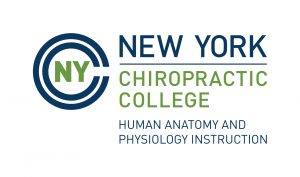
Foldit Protein Folding Game
4.5 minutes
The online protein folding game called Foldit lets you and/or your students help scientists work out protein folding that promotes scientific advancement. And interesting way to learn science, help science, and contribution to potential therapies for COVID-19 and other diseases. Teaching resources are available.
- Foldit: Solve Puzzles for Science (start page for the site where you solve protein folding puzzles) fold.it
- Foldit: Instructions for Educators (help in using Foldit in your course) my-ap.us/39y2Ioe
- The creativity of citizen scientists could help researchers design proteins that may be able to fight the SARS-CoV-2 virus. (Interview with scientists who use Foldit results.) my-ap.us/2Jvhwti
- Want to fold some proteins? (my 2012 post in The A&P Professor blog on Foldit, with links) my-ap.us/33YbH0K
- Protein folding game (my 2012 post for students in The A&P Student blog) my-ap.us/33XbbAf
- Why bother with protein folding? (post in The A&P Professor blog about why I think our students need to know something about protein folding) my-ap.us/2w35y73
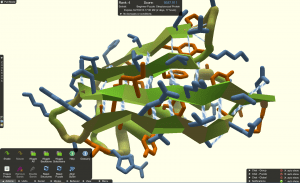
Sponsored by HAPS
0.5 minutes
The
Human Anatomy & Physiology Society (HAPS) is a sponsor of this podcast. You can help appreciate their support by clicking the link below and checking out the many resources and benefits found there. Watch for virtual town hall meetings and upcoming regional meetings!
Anatomy & Physiology Society
theAPprofessor.org/haps

Online Medical Education Summit
2 minutes
Past guest on this podcast Chase DiMarco introduces a new event from FreeMedEd—the
Online Medical Education Summit (OMES) at
FreeMedEd.org/OMES
- Memory Palaces with Chase DiMarco | Episode 64
- Social media:
- Faculty can book a one-on-one chat with Chase DiMarco at
-
- Students or faculty can get personalized tutoring at
- Read This Before Medical School: How to Study Smarter and Live Better While Excelling in Class and on your USMLE or COMLEX Board Exams

Slides Serve Our Story
12 minutes
When we give presentations, it's best if our slides serve our story—rather than letting our story serve our slides. How to do that? Sparse, well-organized text and lots of pictures.
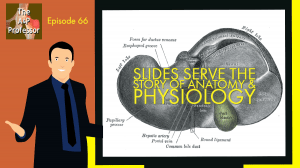
Offer from ADInstruments
1 minute
Episode sponsor
ADInstruments is offering their
Lt online learning platform with content for laboratory solutions in physiology, anatomy, and biology free at this time to help professors get ready-to-go, quality online lab experiences quickly.
🡲 Just go to
Adinstruments.com/lt/covid19 to get this offer.
And tell 'em The A&P Professor podcast is where you heard about it!

If the hyperlinks here are not active, go to
TAPPradio.org to find the episode page.
Tools & Resources
Sponsors
Transcript and captions for this episode
are supported by the
aprovides marketing support for this podcast.
Distribution of this episode is supported by
NYCC's online graduate program in
Clicking on sponsor links
helps let them know you appreciate
their support of this podcast!
The A&P Professor® and Lion Den® are registered trademarks of Lion Den Inc. (Kevin Patton)
Click here to listen to this episode—or access the detailed notes and transcript.










